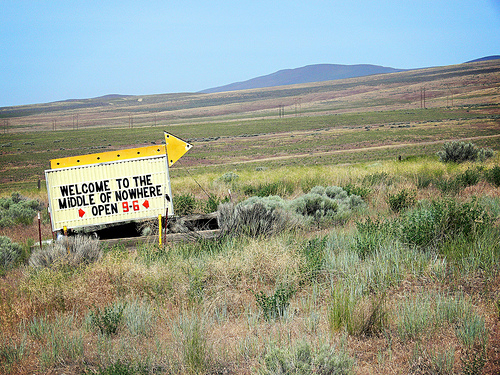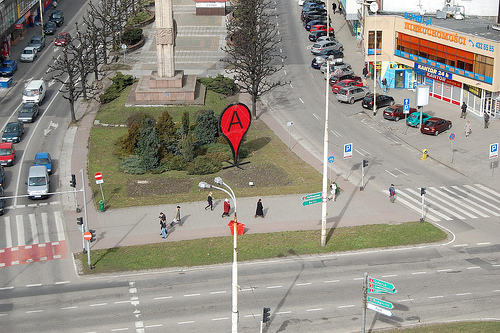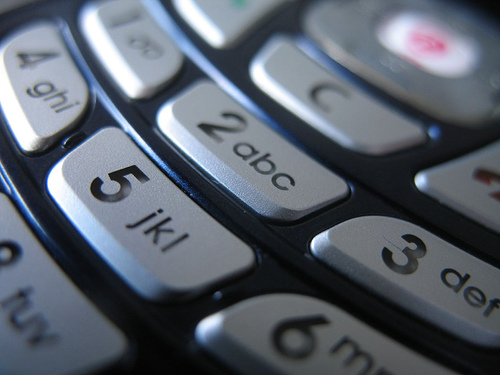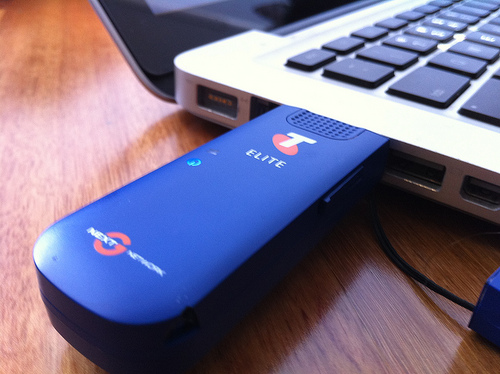The more extreme your distance from civilization, the more expensive and cumbersome your Internet connectivity solutions become. Staying connected becomes a matter of taking the Internet with you, rather than going to it. Whether you’re hundreds of miles in dense forest or out driving days across the desert, you can help make wifi signals appear out of thin air.

In order of ease and cost, these are your general options for getting online when there’s no connection in sight.
 Preparation First
Preparation First
Wireless Internet comes up in the places you might not expect and if there’s any hint of civilization along your planned path, even if it’s a meteorological weather station, you might be in luck. Begin by having a rough idea of potential connection points with JiWire (the first step of wireless hacking) or even consider asking to borrow if it’s a pub or gas station in the middle of nowhere. When that’s not a feasible option you can try your hand at hacking that connection (the second half of wireless hacking).
Now, back to the world where there are no connections you can go to; it’s time to bring the Internet to your laptop.
Mobile Phone Tethering
This method takes advantage of mobile phone 3G networks and when connected to your laptop gives you an Internet connection through the phone itself. Some mobile phone providers allow “tethering” (what this type of connection hack is called) leaving it an option to be enabled on the phone itself. For those of you who have providers that don’t allow tethering, you can typically modify the phone’s software to let you do it.

- Keep in mind you’re likely breaking a warranty and the terms of your phone contract if tethering is not available without some elbow grease.
Whether it takes jailbreaking your iPhone or enabling a default function, once you plug your phone into your laptop and tether you’ll have to content with a connection slower than you’re probably used to. Also, it’s important to keep in mind you’ll (usually) be charged roaming data rates so prioritize and minimize your Internet tasks via tether.
Advantages: 3G networks widespread globally, no new hardware required
Disadvantages: Relatively high cost for a slow connection, also requires a mobile phone and service
3G USB Modems
Offered by mobile phone providers as well, these devices, like tethering, give you access to the Internet via mobile phone 3G networks. Using one of these modems you won’t need to tinker to tether with a faster connection to boot. Most mobile phone providers have some variation of these devices, you’ll just need to be sure they’re international if you happen to leave the country.

Also, be sure to get exact rates and bandwidth limitations from the provider based on your specific needs.
Advantages: Simple to use, relatively quick connection using widespread 3G
Disadvantages: Expensive and generally low bandwidth limitations
Portable Satellite Kit
A portable satellite kit is huge jump from tether or a USB modem in terms of price and hardware you’ll have to lug around to get online. Kits are usually made up of a thin panel, about the size of a small book you can set up and angle towards a particular satellite Internet provider in the sky. Connections can be found just about anywhere on Earth, although bad weather can significantly hamper your connection or kill it all together.

Going satellite is not for the faint-of-wallet though, starting at around $2,500 for the equipment and at least $1,000 a month for enough bandwidth to make such a solution financially worth the investment.
Advantages: Connections in the most remote places
Disadvantages: Cost, reliability, extra hardware
Think Long Term
Depending on how long you’ll be offline and how much you need to be online you can find a patchwork solution that works for you. Generally speaking a combination of good wifi mapping with a sprinkle of tether or USB modem is enough to get you through Internet travel droughts without the need to get your connection from the near orbit.
[photos by: lleugh (middle of nowhere sign), agoasi (Google map point), JonJon2k8 (mobile phone keypad), BeauGiles (USB modem), DeeTrak (remote Internet)]









{ 2 comments… read them below or add one }
I tend to make the most out of these places and plan to enjoy an “offline time” as it makes a great excuse as long as you leave voicemail on and an out of office email reply your sorted.
It is nice to turn it all of once in a while
But when a connection is needed I find the 3G dongles to be most useful. If you have a group that needs to share a connection or you have multiple devices the MI-FI is a great bit of kit
Also you can buy wifi routers that you can plug 3G dongles into to give better signal, very clever.
It is refreshing I admit, though I can’t remember the last time I was a solid 36 hours away from it :/
I appreciate the 3G feedback, that’s probably going to be my primary method this September when Internet becomes a rare commodity for me that month.